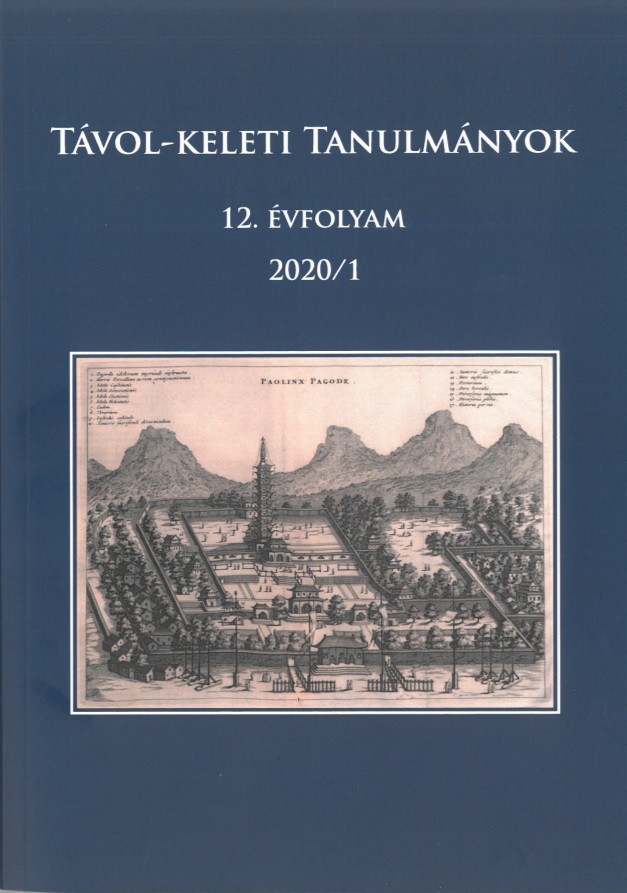Published 2021-02-25
Keywords
- culture,
- cultural studies,
- South Korea,
- critical realism,
- qualitative survey
- Nvivo software ...More
How to Cite
Copyright (c) 2021 the author(s)

This work is licensed under a Creative Commons Attribution-NonCommercial 4.0 International License.
Abstract
Meeting new cultures, and the individual’s integration into them, have always concerned the author of this publication, particularly how the members of one culture find the members of another culture engaging, and therefore have pleasant feelings towards them, while there are other “repulsive” cultures which generate negative feelings, making close relations between the two cultures unimaginable. In this paper I would like to present the results of my research, which aims to give a better understanding of the South-Korean culture from a Hungarian perspective. In this investigation I interviewed members of the Hungarian culture about their experiences, observations and thoughts on the Korean culture. The literature showed that despite huge cultural differences, cooperation can be smooth (Azevedo, 2011). Geographically these are two distant cultures, which differ from each other by history, values and traditions. The goal of the research was to explore and understand how the cultural discrepancies experienced by the interviewees in interactive situations were interpreted by them and what factors and values they attributed them to. This research provides a deeper understanding of the discrepancies between these two cultures, as seen by Hungarians.
References
- Azevado, G. 2011. „Intercultural integration in Sino-Brazilian joint ventures.” In: Cross-Cultural Management in Practice: Culture and Negotiated Meanings. Edward Elgar Publishing Limited.
- Chevrier, S. 2009. „Is National Culture Still Relevant to Management in a Global Context? The Case of Switzerland.” International Journal of Cross Cultural Management 9:83. https://doi.org/10.1177/1470595809335723
- Choi, S. Kim, K. 2000. „The Internal Structure of Korean Social Chemyeon.” Korean Journal of Social and Personality Psychology 14: 85–202.
- De Bary, W.T 1988. East Asian civilizations: a dialogue in five stages. Harvard University Press.
- Gudykunst, W. B. – Kim, Y. Y. 1997. Communicating with Strangers. Boston: McGraw Hill.
- Herman, J. 2003. Trauma és gyógyulás. Budapest: Háttér-Kávé-NANE.
- Hahm, C. 1997. „The Confucian Political Discourse.” Korea Journal. Seoul, Winter.
- Hall, E. T. – Hall, M. R. 1989. Understanding Cultural Differences. Yarmouth/ME: Intercultural Press.
- Hall, E. T. 1960. „The Silent Language of Overseas Business.” Harvard Business Review 38. May-June.
- Hidegh, A. – Gelei, A. – Primecz, H. 2014. „Mi a baj a modern szervezetekkel? Kritikai menedzsment elméletek – bevezetés What is the problem with modern organizations? Critical management studies – An introduction.” Vezetéstudomány 45/6.
- Hofstede, G. 1991. Cultures and Organizations: Software of the Mind. London: McGraw-Hill.
- Hofstede, G. – Bond, H. 1988. „The Confucius Connection: From Cultural Roots to Economic Growth.” Organizational Dynamics 16/4: 4–21. https://doi.org/10.1016/0090-2616(88)90009-5
- Hsieh, H-F. – Shannon, S. E. 2005. „Three Approaches to Qualitative Content Analysis.” Qualitative Health Research 15/9:1277–1288. https://doi.org/10.1177/1049732305276687
- Keum, Jang-tae 2000. „Confucianism and Korean Thoughts.” Korean Studies Series 10. Jimoodang Publishing Company, Korea
- Kim, Doo-hyon 1969. A Study of Korean Family System. Seoul: National University Press.
- Kim, Y. – Yang, J. 2013. „Impact of Chemyeon on Koreans’ Verbal Aggressiveness and Argumentativeness.” Korea Journal 53/3: 48–77. https://doi.org/10.25024/kj.2013.53.3.48
- Kluckhohn, C. 1951. „Values and Value Orientations in the Theory of Action. An Exploration in Definition and Classification.” In: Parsons, T. – Shils, E. A. (eds.): Toward a General Theory of Action. Cambridge, Massachusetts: Harvard University Press, 388–433. https://doi.org/10.4159/harvard.9780674863507.c8
- Krippendorff, K 1989. Content Analysis. Annenberg School for Communication, Departmental Papers. University of Pennsylvania.
- Koreai közmondások 2014. Ford és szerk. M. Nagy Miklós. Budapest: Kelet Kiadó.
- Kuhn, T. 1984. A tudományos forradalmak szerkezete. Budapest: Gondolat Kiadó.
- Kultúrák@kontextusok.kommunikáció 2007 Szerk: Dr. Hidasi Judit. Budapest: Perfekt Zrt.
- Lias, M. 2015. South Korea’s Real Culture of Shame, Korea Exposé. https://koreaexpose.com/south-koreas-real-culture-of-shame/ (Letöltve: 2017. október 8.)
- Oberg, K. 1955. „Cultural shock. Adjusment to new cultural environments.” Practical Anthropology 7: 177–182. https://doi.org/10.1177/009182966000700405
- Osváth Gábor 2003. „A távol-keleti verbális kommunikáció néhány sajátossága.” In: Tóth Szergej (szerk.): Nyelvek és Kultúrák találkozása. Szeged: Szegedi Tudományegyetem Juhász Gyula Tanárképző Főiskolai Kara, 41–44.
- Park, Myung-seok 1999. Communication Styles in Two Different Cultures: Korean and American. Seoul: Hanshin Publishing Co.
- Primecz, H. 1999. „Hofstede – más szemmel.” Marketing és Menedzsment 3–4:111–115.
- Primecz, H. 1999. „A szervezeti tudás születése. A szervezetelméletek pozitivista, kritikai realista és posztmodern megközelítése.” Vezetéstudomány 30.6:
- Primecz, H. – Romani, L. – Sackmann, S. (eds.) 2011. Cross-Cultural Management in Practice. Culture and Negotiated Meanings. Northampton: Edward Elgar. https://doi.org/10.4337/9780857938725
- Pye, L. W. 1985. Asian Power and Politics: The Cultural Dimensions of Authority. Harvard University Press.
- Sohn, Ho-min 1986. „Cross cultural patterns of honorifics and sociolinguastic sensitivity to honorific variables.” Papers in Linguistics 19/3: 365–401. https://doi.org/10.1080/08351818609389264
- Topcu K. 2005. „A kulturstandard módszer, mint az interkulturális kooperációk elemzésének egyedi eszköze.” Vezetéstudomány 36/10: 2–16.
- Topcu K. 2005. A kulturstandard-kutatás elmélete és gyakorlata magyar-osztrák menedzser-interakciókban: egy magyar szempontú jellemzés. PhD-értekezés, Budapest.

